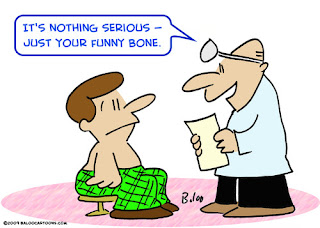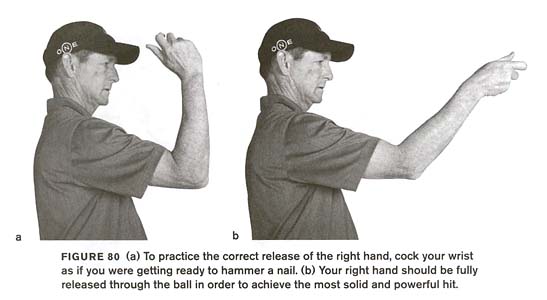When you get the feeling of the "knife edge" going through the air creating a "slot"
First off, with exception to this forum I've NEVER heard a champion caliber players talk about the elbow.....it's simply not necessary to contemplate this action. What's more important is not moving the shoulder (although there's exceptions), it needs to stay out of the stroke and just add stability. The #1 objective is to extend the TIP through the cue ball on a track/groove/slot. This way the tip/cue can NOT deviate left or right on any shot.
The TIP should go as quickly and accurately through the cue ball as possible with a minimal effort......using a force similar to hammering a nail...it's not "centrifugal force," however, that may be the best way to think about it as a "swing thought".
I'm interested in how the cue and tip move - that's what the sword training does, it strengthens the movement of the sword's edge "like" a pool cue through the imaginary cue ball. When you get the feeling of the "knife edge" going through the air (creating a "slot/groove") with some resistance it is a very good way to experience "razor sharp" accuracy. Then it's just a matter of switching to a pool cue and feeling the same sensation.
If you don't have access to a sword you can use a yard stick or other flat "stick" as a substitute, the main objective is to feel the edge moving back and forth without moving your shoulder......let the elbow do what it wants, JUST concentrate on the blade's edge being precisely on a "track/groove/slot". 'The Game will be your Teacher'
Hi CJ,
As you may or may not know the dropping of the elbow & keeping the elbow fixed has been a topic of debate recently.
I do not & never have given one thought to my elbow in the many mnay years that I have played. I have just always focused on delivering the cue straight into & through the cue ball.
I had always used what would be called by most a loose grip where the cue sort of pivots as though there was a small rod that was running from the tops of my thumb & index finger through the butt of the cue.
When I went to using TOI my grip naturally firmed up with no real conscious thought by me. I have also not consciously used the hammer stroke but...again have been subconsciously stroking with a more compact stroke & hitting very many shots with just my wrist, hand, & fingers, with very little arm swing & the action has been that of your hammer action.
With a firm grip, if one swings the forearm with a fixed elbow or if one swings the whole arm from the shoulder & allows the elbow to drop, both methods would make the tip rise going through if some other movement is not made in conjunction with them.
Naturally, the hammer wrist action sends the tip down by it self with no other motion going along with it. So...the hammer wrist action & the arm swings with a frim grip want to send the tip in opposite directions but...the amount that is capable for both is not equal.
So..now to my question. Do you know what or do you have any thought as to anything else that offsets the greater amount of tip movement that would occur from the larger movement of the arm swings with a firm grip?
As I 'see' it, it is the extension of the forearm away from the upper arm as opposed to bringing them together. Am I correct, on the right track, or not? It that what your sword drill is about & if so would you care to elaborate on it?
As Always, Best Regards & Best Wishes,
Rick
First off, with exception to this forum I've NEVER heard a champion caliber players talk about the elbow.....it's simply not necessary to contemplate this action. What's more important is not moving the shoulder (although there's exceptions), it needs to stay out of the stroke and just add stability. The #1 objective is to extend the TIP through the cue ball on a track/groove/slot. This way the tip/cue can NOT deviate left or right on any shot.
The TIP should go as quickly and accurately through the cue ball as possible with a minimal effort......using a force similar to hammering a nail...it's not "centrifugal force," however, that may be the best way to think about it as a "swing thought".
I'm interested in how the cue and tip move - that's what the sword training does, it strengthens the movement of the sword's edge "like" a pool cue through the imaginary cue ball. When you get the feeling of the "knife edge" going through the air (creating a "slot/groove") with some resistance it is a very good way to experience "razor sharp" accuracy. Then it's just a matter of switching to a pool cue and feeling the same sensation.
If you don't have access to a sword you can use a yard stick or other flat "stick" as a substitute, the main objective is to feel the edge moving back and forth without moving your shoulder......let the elbow do what it wants, JUST concentrate on the blade's edge being precisely on a "track/groove/slot". 'The Game will be your Teacher'


